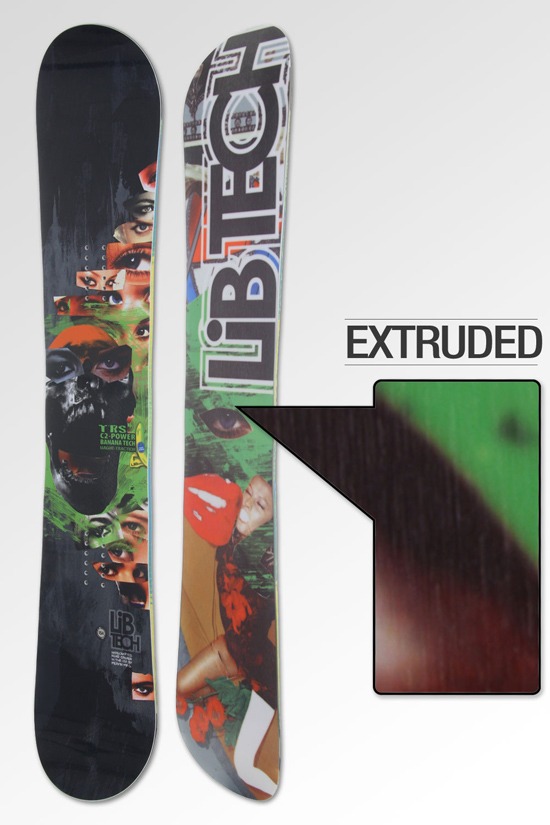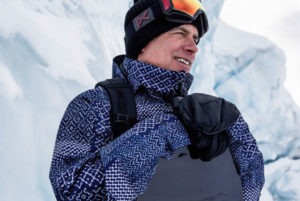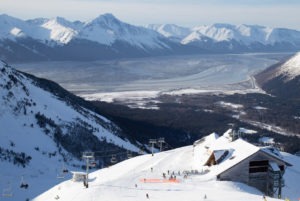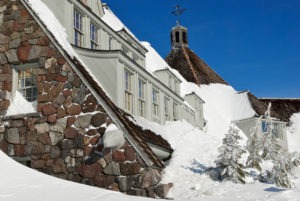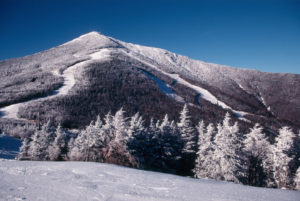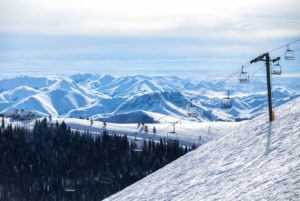Which Snowboard Base is Best For You? Extruded or Sintered
A slow base is the bane of a snowboarder’s existence. It’s the difference between doing the shuffle-n-scoot on the flats or blazing by everyone like they’re standing still. What is the secret behind superior glide? Fast versus last isn’t the whole story.
The relationship between a snowboard base and snow is about interaction between the base and water, according to Salomon engineer Henri Rancon. “When a snowboard glides on the snow, some energy is lost through friction, and the kinetic energy becomes heat,” Rancon says. “This heat melts the snow into a really thin layer of water, and the base glides on this water layer.”
That’s how they glide, but which base is best to ride?
An Extruded Base Is A Carefree Base
If you want the ability to repair your own deck after casing it down concrete steps or schralping a shark-studded snowfield, then you likely want a board with an extruded base. They are cheaper to make, require less maintenance, and are easier to repair. Made by melting down polyethylene (a dense, abrasion resistant thermoplastic with low friction properties) pellets and then applying pressure, extruded bases are slower, hold less wax, and are less abrasion resistant than sintered bases. But that doesn’t mean they don’t have their place.
According to Palmer Snowboards engineer Martin Mitterer, “It makes no sense to sell a sintered, high-speed base to a customer who only rides 3 times a year and doesn’t wax his board. He would have much more fun with an extruded ‘carefree’ base which runs ok without waxing it in almost every condition.”
A Sintered Base Is A Performance
If you’re a competitive or speed-obsessed rider who waxes all the time and lets the pros do the repair work, than a sintered base is the ticket. Sintered bases are higher maintenance and more expensive, but faster and more durable when cared for properly. Rather than melting polyethylene pellets together (extrusion), sintered bases are manufactured by crushing the pellets together under high pressure. This makes a sintered base more porous for maximum wax absorption, and more abrasion-resistant.
Base additives can also boost glide. For Palmer’s 7200 sintered base (7200 is the molecular weight of polyethylene), graphite is added to the mix during the sintering process, hardens the plastic, and decreases base friction. Similarly, Salomon adds the mineral zeolite during the sintering process for their high-end boards to increase thermic conductivity, so more heat is absorbed by the base, resulting in better glide.
Base Finish
“Your base will be fast, or not, due to three things: the material, the transformation, and your wax job,” says Rancon. Transformation refers to how the base is treated near the end of production. Many companies belt grind their boards to keep costs low. But Salomon stone grinds all their boards, which is why they’ve gotten a rep for fast bases, according to Alex Warburton, Salomon’s Product Line Manager. The resulting base structure (tiny diamonds) helps melt the snow and distribute it in small drops. The drops act like ball bearings, preventing suction and reducing friction.
The final layer is wax, and that is up to you. You can buy the fastest, most tricked out base around, but if you don’t wax it, you’ll still be dragging knuckles across the flats.
Shop The House selection of snowboards.
